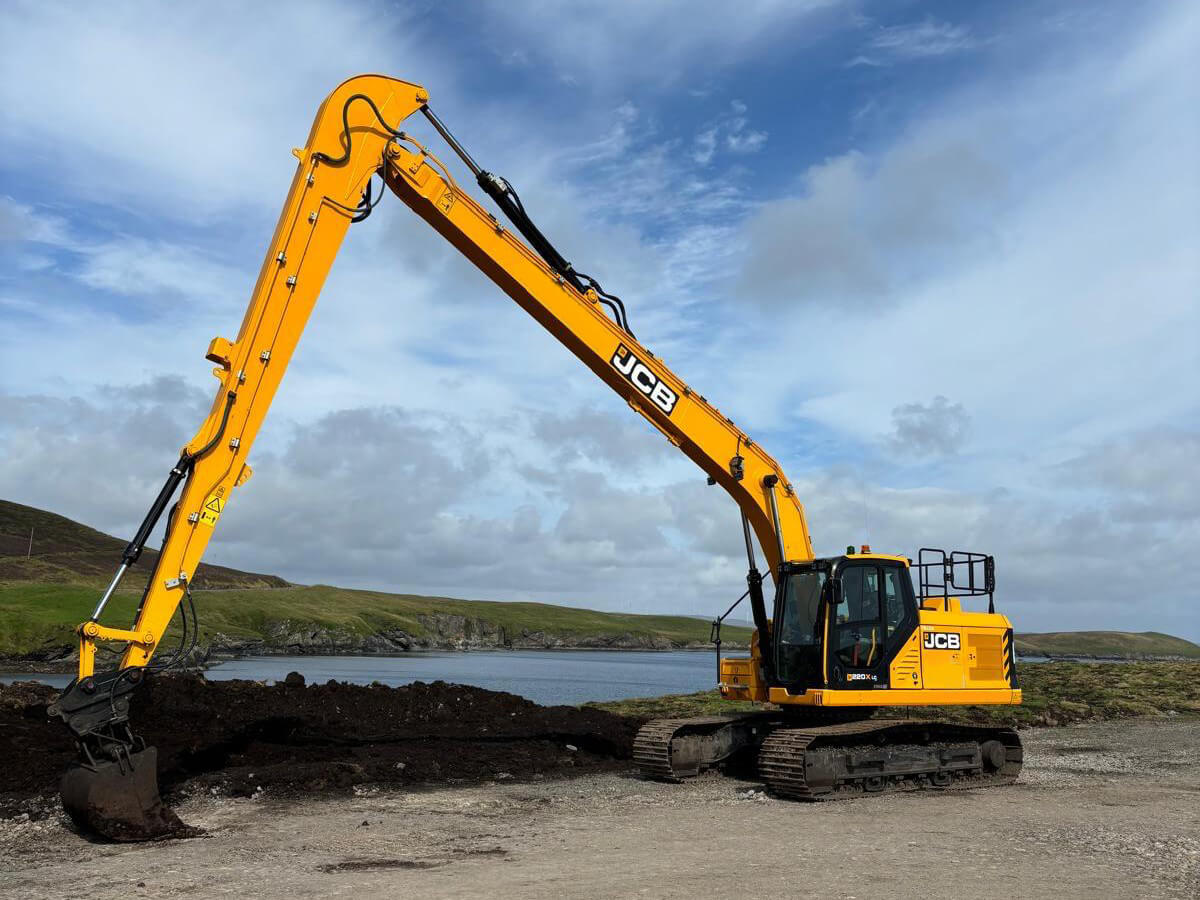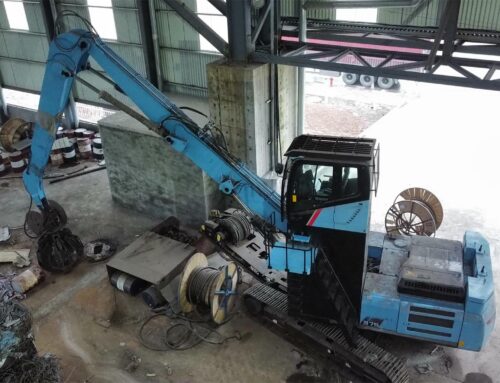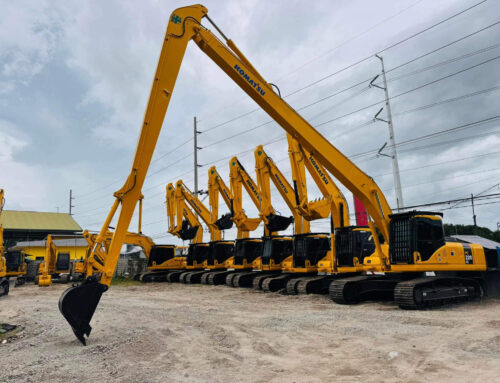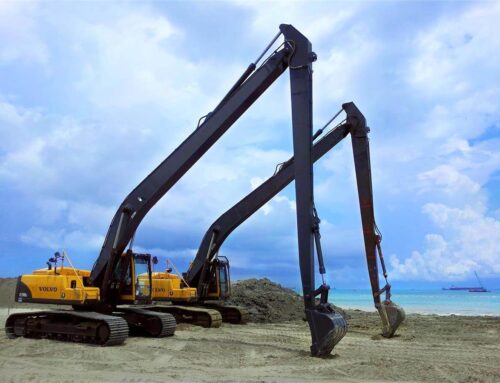Excavators have evolved into one of the most versatile machines in the construction, mining, and demolition industries. One major modification that can enhance their versatility is the addition of a long arm. This modification can extend the reach of the machine, allowing it to work in areas that would otherwise be inaccessible. However, the process of converting an excavator to accommodate a excavator long front boom is not as simple as adding an extension. It requires careful consideration of factors such as the age of the machine, hydraulics, load capacity, counterweight balance, quality checks, and material selection.
This blog post will explore these key aspects in detail to provide a comprehensive understanding of what is required for a successful long arm conversion.
1. Excavator Age and Condition
The first factor to consider when converting an excavator to accommodate a excavator long front boom is the age and overall condition of the machine. Excavators that are too old or have significant wear and tear may not be suitable for conversion.
Machine Age: The age of an excavator is a key indicator of its condition. Machines with more than 10,000 hours of operation are likely to have significant wear and tear, especially on the undercarriage, hydraulics, and structural components. It is critical to evaluate the age and maintenance history of the machine before considering a long arm conversion. If the machine shows signs of severe wear, it may not be able to handle the extra stress of a longer boom.
Structural Integrity: Older excavators are more likely to have worn structural components, such as the boom, arm, and frame. A longer boom increases the stress on these components, so it is important to ensure they are in good condition. Before any modification, it is important to thoroughly inspect the structural components, including checking for cracks, rust, and deformation.
Service and Maintenance History: The maintenance history of the machine also plays a vital role. Regular servicing ensures that key components such as the engine, hydraulic system, and electrical system are functioning properly. If the machine is not properly maintained, it may cause failure when subjected to the extra loads and extensions of a longer boom.
2. Excavator Long Front Boom Hydraulic System
The hydraulic system is the power source of the excavator, controlling the movement of the boom, arm, and other attachments. When modifying an excavator to install a longer boom, it is important to consider the capacity of the hydraulic system.
Hydraulic Flow and Pressure: Long booms require more hydraulic power to operate, especially when extended to full length. An excavator with insufficient hydraulic flow or pressure may struggle to provide the power required for smooth and efficient operation. It is critical to ensure that the excavator’s hydraulic system can handle the increased demands. If not, the hydraulic pump or other components may need to be upgraded to accommodate the modification.
Hydraulic Cylinder Strength: The hydraulic cylinders that control the boom and arm movement must be strong enough to support the additional weight and extension of the long boom. Installing a larger boom increases the load on these cylinders, so they must be able to withstand the additional pressure without leaking or failing. If the existing hydraulic cylinders cannot meet the requirements of the modified boom, the hydraulic cylinders may need to be replaced or upgraded.
Heat Dissipation: Hydraulic systems generate heat during operation, and the increased workload brought by the long boom may cause the system to overheat if the system is not properly cooled. Adding a larger boom puts additional pressure on the hydraulic pump, causing it to work harder and generate more heat. The hydraulic cooling system may need to be upgraded to prevent overheating and ensure the life of the hydraulic components.
3. Load Capacity and Stability
One of the most critical aspects of installing a excavator long front boom is to ensure that the excavator can handle the additional load and maintain stability during operation.
Weight Distribution: The long arm extends beyond the center of gravity of the excavator, which can seriously affect its balance. This can create a tipping hazard, especially when lifting heavy objects or working on uneven terrain. Ensuring that the excavator has a proper counterweight system is essential to preventing tipping accidents. The longer the arm, the greater the risk of instability, so the machine’s weight distribution must be carefully assessed and adjusted accordingly.
Lift Capacity: As the arm is extended further from the machine, the excavator’s lift capacity will decrease. Excavator long front boom increase mechanical advantage but reduce the machine’s ability to lift heavy loads when fully extended. After a modification, it is critical to calculate the machine’s new lift capacity and adjust the workload accordingly. Overloading the arm can cause mechanical failure and endanger the operator and surrounding structures.
Boom Stress: The added length and weight of a long arm also puts more stress on the boom itself. The boom must be designed to withstand the increased stress without bending, cracking or breaking under the load. High-strength steel and precision engineering are required to ensure the boom can withstand the rigors of heavy work at extended lengths.
4. Counterweight and Balance
Excavator long front boom modifications can drastically change the balance of an excavator, so counterweight must be adjusted or added to maintain stability.
Counterweight Sizing: The excavator’s counterweight must be carefully sized to compensate for the longer boom. Heavier counterweights may be required to offset the weight of the extended boom and arm, especially when working at full extension. Failure to add enough counterweight can cause the excavator to tip over, especially when working on a slope or uneven surface.
Counterweight Placement: The placement of the counterweight is just as important as its size. The counterweight must be placed as close to the original design as possible to keep the excavator’s center of gravity as close to the original design as possible. Adding counterweight too far from the center of the machine may cause the excavator to lose maneuverability or stability during operation.
5. Quality Inspection
Before and after modifying an excavator to install a long boom, a thorough quality inspection must be performed to ensure that the machine will operate safely and reliably.
Pre-Modification Inspection: Before any modification is made, the machine must be fully inspected to assess its structural integrity, hydraulic system, and overall condition. Any worn or damaged parts should be replaced or repaired before any modification is made. This inspection should include inspecting the chassis, boom, arm, and bucket for signs of wear, cracks, or rust.
Post-Modification Testing: After the long boom is installed, the machine must be rigorously tested to ensure that it can withstand the additional loads and extensions. This test should include fully extending the boom, lifting various loads, and evaluating the stability and balance of the machine. Any issues found during testing should be addressed immediately to prevent accidents or mechanical failures.
6. Material Selection for Excavator Long Front Boom
The material of a long arm is critical to its durability and performance. High-quality materials must be selected to ensure that the arm can withstand the stress of heavy-duty operations.
High-strength steel: The arm must be made of high-strength steel that can withstand the extra stress and weight. Using inferior materials can lead to structural failure, especially when lifting heavy objects at full extension. High-strength low-alloy (HSLA) steel is often used in excavator arms due to its excellent strength-to-weight ratio and resistance to wear and fatigue.
Corrosion resistance: Excavators often work in harsh environments and are exposed to water, mud, and chemicals. The materials used for long arms should be corrosion-resistant to prevent rust and deterioration over time. Applying a protective coating such as paint or galvanizing can also help protect the arm from the effects of harsh weather.
Conclusion
Modifying an excavator to install a excavator long front boom can significantly increase its versatility and capabilities. However, before making a modification, the age of the machine, hydraulic system, load capacity, counterweight balance, quality inspection, and material selection must be carefully considered. Proper planning, engineering and attention to detail are essential to ensure your converted excavator is safe, reliable and capable of performing the tough tasks required of a long reach.
By addressing these key factors, you can ensure your excavator conversion project is a success, allowing your machine to take on new challenges and expand its range of applications.







Leave A Comment